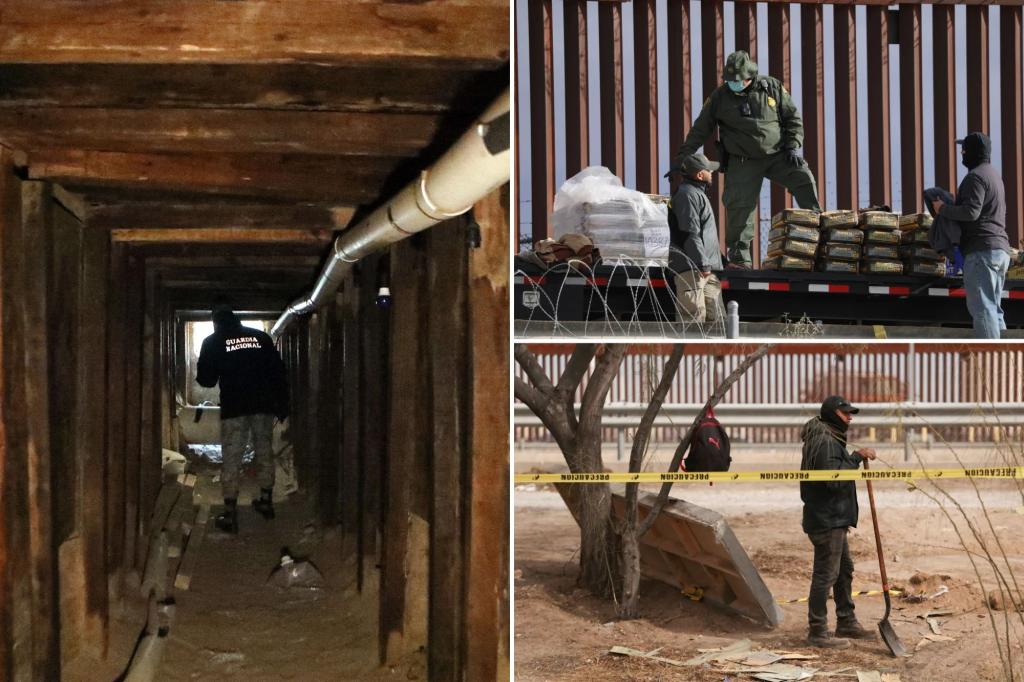World
Feds likely eyeing ‘cover-ups’ of underground tunnels to bust Mexican cartels along border: former DEA agent

The Ongoing Battle Against Mexican Drug Cartels and Cross-Border Tunnels
Introduction: The Challenge of Cross-Border Drug Smuggling
Mexican drug cartels have long been a thorn in the side of U.S. law enforcement, employing sophisticated methods to smuggle illegal narcotics into the country. One of their most ingenious tactics is the use of underground tunnels equipped with elaborate rail and cart systems. These subterranean passageways allow cartels to bypass traditional border surveillance and efficiently transport large quantities of drugs into the United States. The Trump administration, which has made combating illegal drug trafficking a priority, faces a significant challenge in curtailing this method of smuggling.
According to the U.S. Drug Enforcement Agency (DEA), while most illicit drugs enter the country through vehicles at southern border checkpoints, a notable portion is smuggled via these cross-border tunnels. This method poses a unique challenge, as it requires specialized resources and intelligence to detect and dismantle such operations. The DEA has reported that cartels have constructed dozens of these tunnels, outfitting them with advanced infrastructure to facilitate their operations.
The Trump Administration’s Efforts to Combat Drug Trafficking
President Donald Trump has consistently vowed to stem the flow of illegal drugs into the U.S., implementing policies such as a 25% tariff on imports from Canada and Mexico. However, the effectiveness of such measures in addressing the root issue of cartel-driven drug smuggling remains unclear. Despite these efforts, the problem persists, with cartels continuing to exploit innovative methods to evade law enforcement.
The severity of the drug crisis in the U.S. cannot be overstated. In 2022 alone, an estimated 107,941 people died from drug-involved overdoses, according to the National Institute on Drug Abuse. This alarming statistic underscores the urgent need for effective strategies to curb the influx of illegal narcotics. The DEA and other federal agencies are increasingly focused on identifying and dismantling these underground tunnels, which have become a critical component of cartel operations.
The DEA’s Strategy to Combat Tunnel Networks
Former DEA Senior Special Agent Michael Brown, now the global director of counter-narcotics technology at Rigaku Analytical Devices, emphasized the importance of intensifying investigations into these underground networks. Brown explained that cartels often disguise tunnel entrances and exits as innocuous businesses, such as pizza shops or mechanic warehouses. These "cover-ups" make it difficult for law enforcement to detect the tunnels, particularly in areas like Eagle Pass or Brownsville, Texas, where such fronts blend seamlessly into the local landscape.
To combat this, Brown suggested that federal authorities must adopt a more proactive approach. Instead of relying solely on informants or traditional surveillance methods, agencies like the DEA and Homeland Security Investigations (HSI) should focus on identifying the sources of these tunnel networks. By tracing the origins of the materials and resources used to construct the tunnels, authorities may uncover critical leads about their locations and connections within the U.S.
The Historical and Global Context of Tunnel Warfare
The use of tunnels for illicit activities is not a new phenomenon. Brown highlighted historical examples, such as their use during the Vietnam War and more recently by Hamas in Gaza. These groups have demonstrated the effectiveness of tunnels as a means of evading detection and conducting covert operations. Cartels, however, have taken this tactic to the next level, constructing complex underground systems that rival the sophistication of those built by terrorist organizations.
Unlike Hamas, which relies on international aid to fund its tunnel networks, Mexican cartels are fueled by billions of dollars in drug profits. This financial advantage allows them to build elaborate "underground cities" complete with air ducts, office spaces, weapon stashes, and even railway tracks. The scale and complexity of these tunnel networks pose a formidable challenge for U.S. authorities, who must balance the need to disrupt these operations with the ethical and legal implications of their methods.
The Broader Implications and Future of U.S. Drug Policy
The drop in border crossings since Trump’s return to office has been significant, with migrant encounters plummeting from an average of 2,869 per day during the final days of the Biden administration to just 1,041 per day in the first week of Trump’s presidency. This decline has been hailed as a success by some, but Brown cautioned that the tunnel networks remain a critical issue that cannot be ignored.
While the U.S. has not yet adopted the extreme measures employed by the Israel Defense Forces (IDF), which flooded Hamas tunnels with water, the situation in the U.S. is vastly different. As Brown noted, the U.S. would never engage in tactics that could result in collateral damage to innocent civilians or infrastructure. However, he suggested that if the scale of the threat were to escalate, American attitudes toward such methods might shift.
In conclusion, the battle against Mexican drug cartels and their cross-border tunnels is a multifaceted challenge that requires a combination of intelligence, resources, and strategic planning. While the DEA and other agencies have made progress in identifying and dismantling these networks, the cartels’ ingenuity and financial resources ensure that this remains a pressing issue. As the U.S. grapples with the broader implications of drug trafficking, one thing is clear: a comprehensive and innovative approach is necessary to effectively combat this scourge.